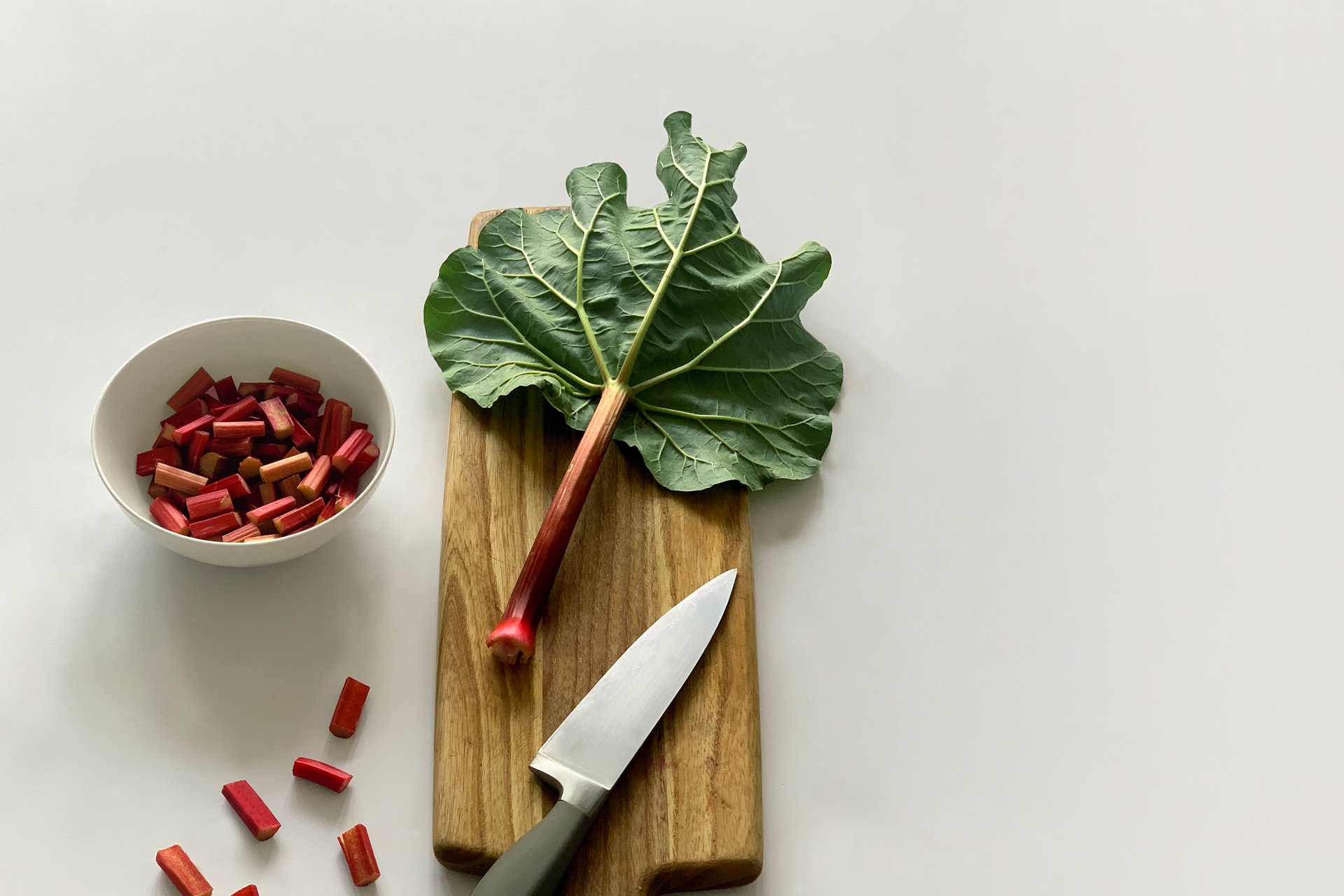Rhubarb is one of the friendship plants in my garden. It was given to me by a neighbor who has an interest in natural landscaping and all things outdoors. She hacked her mother plant in half when it started to take up too much real estate in her vegetable garden. She entrusted the other half to me, along with two clumps of chives, (regular and garlic), and two struggling blueberry bush seedlings she adopted in an orphan box from a local nursery.
I have a special kinship with my rhubarb plant as it reminds me of the one that resided at my grandmother’s stone wall in her side yard. As children, my friend, Barb, and I would each tear off a stalk, rinse it with the garden hose (or not), discard the leaves and dip the pink stems in a cup of shared sugar. There is nothing like the crunchy, sweet-and-sour taste of early summer in the company of your best friend.
The Arrival of Spring
Each year, my rhubarb is one of the earliest plants to emerge from the chilly garden soil; the first whisper of spring rebirth. Her early growth pokes through the mulch, jewel-toned and rather exotic. She has emerald-green leaves that curl in tightly on themselves, reminiscent of little brussels sprouts on ruby-red posts. As the season progresses, the foliage grows exponentially and unfurls into large fans, draping and shading the ribs of her stalky crinoline. Her name is Barb. She is planted next to the chive twins. The trio returns annually; robust and claiming ever more space, without my help or my permission. I love them for their unapologetic independence.
Harvesting Rhubarb in the Garden
The first few years after planting, I left her alone and harvested nothing. All the reading I have done encourages waiting until the second season (or even the third if you planted from seed). As mine had been cleaved from its mother, I let her be for a while to establish herself into a healthy adult in her own right.
Season Two – Harvest
The second year, I gathered stalks. Per usual, I went to my trusted resources for pointers. I usually seek out educational institution sites, extension websites or other reliable gardening sources. All advised not to use a knife when removing stalks from the plant, but rather, to hold the stalk firmly near the bottom and give it a simultaneous twist/pull. They pop right off and from what I have read, this is the cleanest, healthiest way to remove them.
Trimming Rhubarb for Use in the Kitchen
The leaves should be trimmed off immediately with a knife. The leafy part is actually toxic. Leaving them on can also speed up wilting of the stalk. I dispose of them in my compost pile. While rhubarb leaves do contain poisonous substances (Oxalic acid and soluble oxalates), finished compost containing them can be safely used in the vegetable garden. Their toxins are not readily absorbed by plant roots.
When to Pick Rhubarb in the Garden
Picking season is usually April-June, depending on your location. The longer into the growing season, the “woodier” the stalks become. Best stalk length is 10-15 inches. When harvesting, leave at least one third to one half of the plant intact to ensure it will recover and continue to yield for next year’s harvest.
Bolting
The rhubarb in your garden may send up a flower/seed stalk. This is called bolting. Up until this year, I never removed the flower or its stem. As I began researching how to harvest, however, I discovered allowing the flower to develop can also reduce the plant’s strength for future growth.
Environmental conditions that will encourage your rhubarb plant to bolt are infertile soil, extreme heat or drought. This year, after removing the flower stalk, I recycled it into a flower arrangement. The flower/seed head is unique and artsy. It can add whimsy to a floral centerpiece or make a bold statement standing alone.
Maintenance of Rhubarb in the Garden
To date, my plant has remained independent, vigorous and healthy in its corner of the vegetable garden. Fertilizing, however, as well as dividing an older plant in early spring or late summer (as my friend did), can contribute to better health of a failing plant. Some growers also suggest relocating plants occasionally, as they are heavy users of soil nutrients. In all honesty, my rhubarb seems to care less what I do or don’t do for her. She ignores me as I admire her strength and beauty.

Love the old fashioned rhubarb plants! I have a delicious strawberry rhubarb jam recipe that’s super easy – will send it to you! xoxoxo
Thanks! I just made your blueberry cake the other day. Yum!